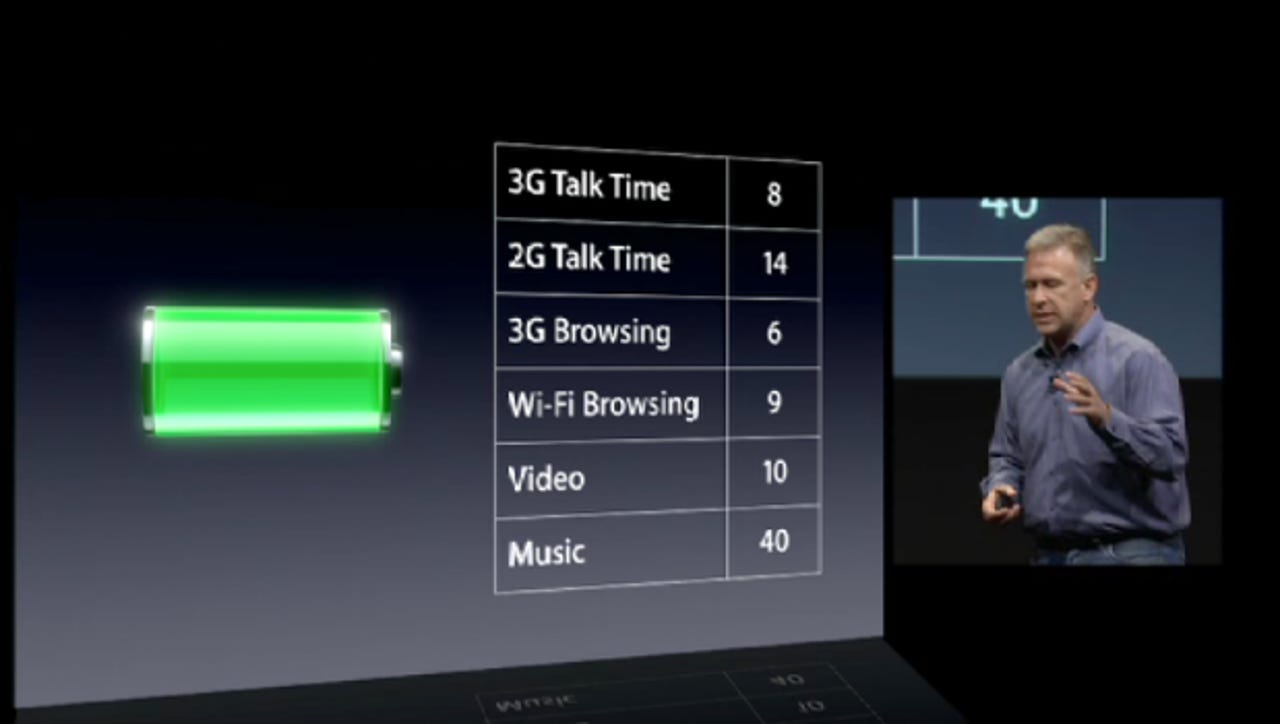The iPhone 4S and the 100 hours of lost standby time

Quick, spot the missing data point from this table that Phil Schiller, senior vice president of worldwide product marketing at Apple, is showing at the iPhone 4S launch event?
Give up? It's standby time. How long your handset will last between charges while it's sitting on the desk on in your pocket doing nothing (well, actually, it's doing a lot, but you're not doing anything with the phone). I thought at the time that it was odd that Apple didn't offer up this piece of information so I waited for the iPhone 4S tech specs to go live online.
200 hours ... At the time I was doing my initial rundown of the iPhone 4S I found this odd and noted it:
Talk-time battery life up to 8 hours (up from 7 hours for the iPhone 4) BUT standby time down to 200 hours (from 300 hours for the iPhone 4)
300 hours to 200 hours is a huge drop. A slashing of the standby time by a third, down from 12.5 days to 8.3 days. In fact, this is the worst standby time of any iPhone so far:
- iPhone - 250 hours standby time
- iPhone 3G - 300 hours standby time
- iPhone 3GS - 300 hours standby time
- iPhone 4 - 300 hours standby time
- iPhone 4S - 200 hours standby time
Note: These numbers are small compared to, say, the standby time offered by a handset like the Samsung Galaxy S II, which offers a whopping 710 hours (29.5 days) of standby on 2G and 610 hours (25.4 days) on 3G.
Let's take a look at how Apple tests batteries, specifically, standby time:
Testing conducted by Apple in September 2011 using preproduction iPhone 4S units and software, on both GSM and CDMA carrier networks. All settings were default except: Wi-Fi was associated with a network; the Wi-Fi feature Ask to Join Networks was turned off. Battery life depends on the cellular network, location, signal strength, feature configuration, usage, and many other factors. Battery tests are conducted using specific iPhone units; actual results may vary.
So WiFi is left on during standby battery tests. It might be that Apple has increased the amount of power used by the WiFi, perhaps to improve signal. But it might not be. Maybe the dual core A5 processor takes more electrical oomph even when dormant. Maybe it's down to software bugs in iOS. Maybe it's down to the Siri voice recognition system running all the time.
Or maybe ... just maybe ... that Apple has revamped its battery testing procedure and this 200 hour figure is more in line which what people can expect during real-world usage.
